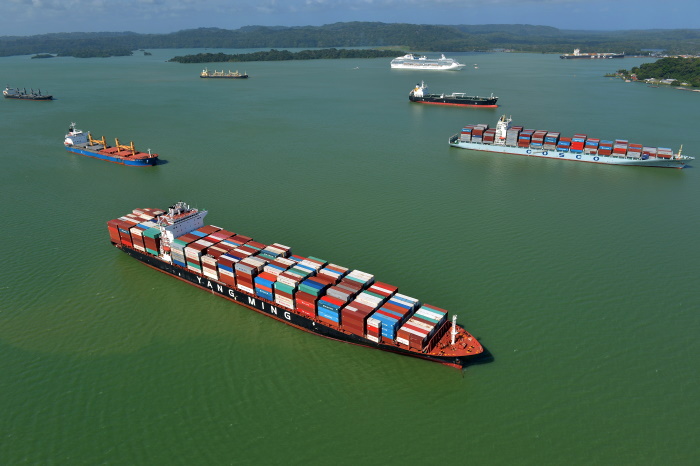Late last month, the United Nations Conference on Trade and Development (UNCTAD) published its Review of Maritime Transport 2019. The report addressed the industry’s quickly shifting landscape and range of challenges, making one rising concern very clear – climate change.
The maritime sector is increasingly facing more intense and frequent natural disasters and climate-related disruptions, affecting shipping operations around the world. UNCTAD cited such consequences as the closing of ports in Asia due to the increasing number of hurricanes and typhoons, as well as the impact of low rainfall on the passage of vessels across Europe and through the Panama Canal.
As a result, climate change adaptation and mitigation have become urgent priorities across the maritime industry, spurring changes such as the IMO 2020 regulation or rise of climate-conscious shipping finance portfolios around the world. The Panama Canal fiercely welcomes these improvements and encourages further action.
The Panama Canal – a shortcut for maritime trade
The Panama Canal has a track record of actively supporting environmental sustainability—not only because it’s the right thing to do, but also because the waterway’s legacy is rooted in, and depends on, sustainability.
Firstly, the Canal offers shippers shorter, all-water voyages compared to alternate routes. Since opening 105 years ago, it has reduced an estimated 800 million tons of carbon emissions, which has been further accelerated by the Expanded Canal, as it allows shippers to transport even greater amounts of cargo in less trips, saving time, fuel and emissions.
The waterway has also actively pushed for progressive sustainability solutions, as demonstrates its recent enrollment to the Global Industry Alliance (GIA).
Sustainability Starts at Home
Starting at home, the Canal has implemented a series of local conservation programs that are specifically designed to drive sustainable development. For example, its Environmental Economic Incentives Program has not only reforested over 22,000 acres of land in the Panama Canal Watershed, but also awarded roughly 15,000 land titles to individuals living in the area, who are then taught sustainable farming methods.
The waterway has come to be defined over the past decade by an environmental strategy that aims to reduce greenhouse gas (GHG) emissions across the maritime industry.
To start, the Canal has instituted several sustainability initiatives for customers, such as the Green Connection Award and Environmental Premium Ranking (EPR), which recognizes customers who demonstrate excellent environmental stewardship with priority slots. The EPR is informed by georeferenced data collected by an Emissions Calculator that the Canal uses to track customer GHG emissions. To date, 975 vessels have applied to the Green Connection Environmental Recognition Program, with more than 10,200 green transits since its inception in 2017, complying with the highest standards of environmental performance.
According to the OECD last year, the EPR was only taking place at the Canal, though it was “an innovative idea” that “could be much more widely applied in ports, as waiting time is arguably a large disincentive for shipping companies. More generally, better-timed ship arrivals could save time and emissions, but would require intense cooperation between many stakeholders.”
Decarbonizing Shipping Together
The Canal shares its commitment to a more sustainable future with a growing group of partners. As the UNCTAD report also noted, the Panama Canal is the first Latin American organization and entity from a developing country to join the Global Industry Alliance, a public-private partnership initiative that brings together 18 maritime industry leaders seeking to improve energy efficiency and reduce GHG emissions in international shipping. The waterway also recently entered into a partnership with UN Environment to further promote sustainable development and climate change mitigation.
It’s evident that the industry is undoubtedly concerned about climate change, however the Panama Canal will continue to push forward the only way we know – by embracing challenges with optimism and partnership.
Source: Panama Canal Authority
